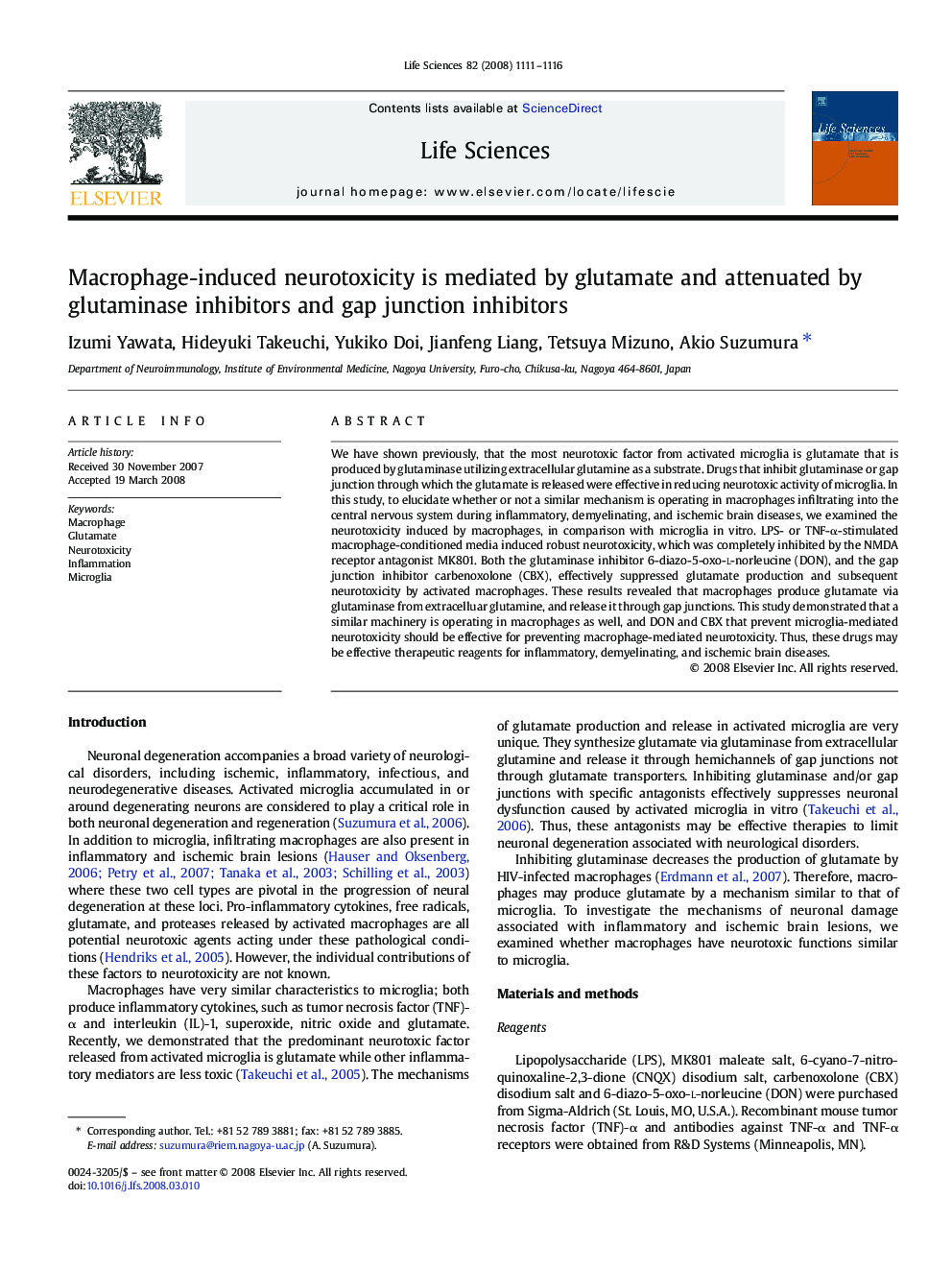| Article ID | Journal | Published Year | Pages | File Type |
|---|---|---|---|---|
| 2553758 | Life Sciences | 2008 | 6 Pages |
We have shown previously, that the most neurotoxic factor from activated microglia is glutamate that is produced by glutaminase utilizing extracellular glutamine as a substrate. Drugs that inhibit glutaminase or gap junction through which the glutamate is released were effective in reducing neurotoxic activity of microglia. In this study, to elucidate whether or not a similar mechanism is operating in macrophages infiltrating into the central nervous system during inflammatory, demyelinating, and ischemic brain diseases, we examined the neurotoxicity induced by macrophages, in comparison with microglia in vitro. LPS- or TNF-α-stimulated macrophage-conditioned media induced robust neurotoxicity, which was completely inhibited by the NMDA receptor antagonist MK801. Both the glutaminase inhibitor 6-diazo-5-oxo-l-norleucine (DON), and the gap junction inhibitor carbenoxolone (CBX), effectively suppressed glutamate production and subsequent neurotoxicity by activated macrophages. These results revealed that macrophages produce glutamate via glutaminase from extracelluar glutamine, and release it through gap junctions. This study demonstrated that a similar machinery is operating in macrophages as well, and DON and CBX that prevent microglia-mediated neurotoxicity should be effective for preventing macrophage-mediated neurotoxicity. Thus, these drugs may be effective therapeutic reagents for inflammatory, demyelinating, and ischemic brain diseases.
